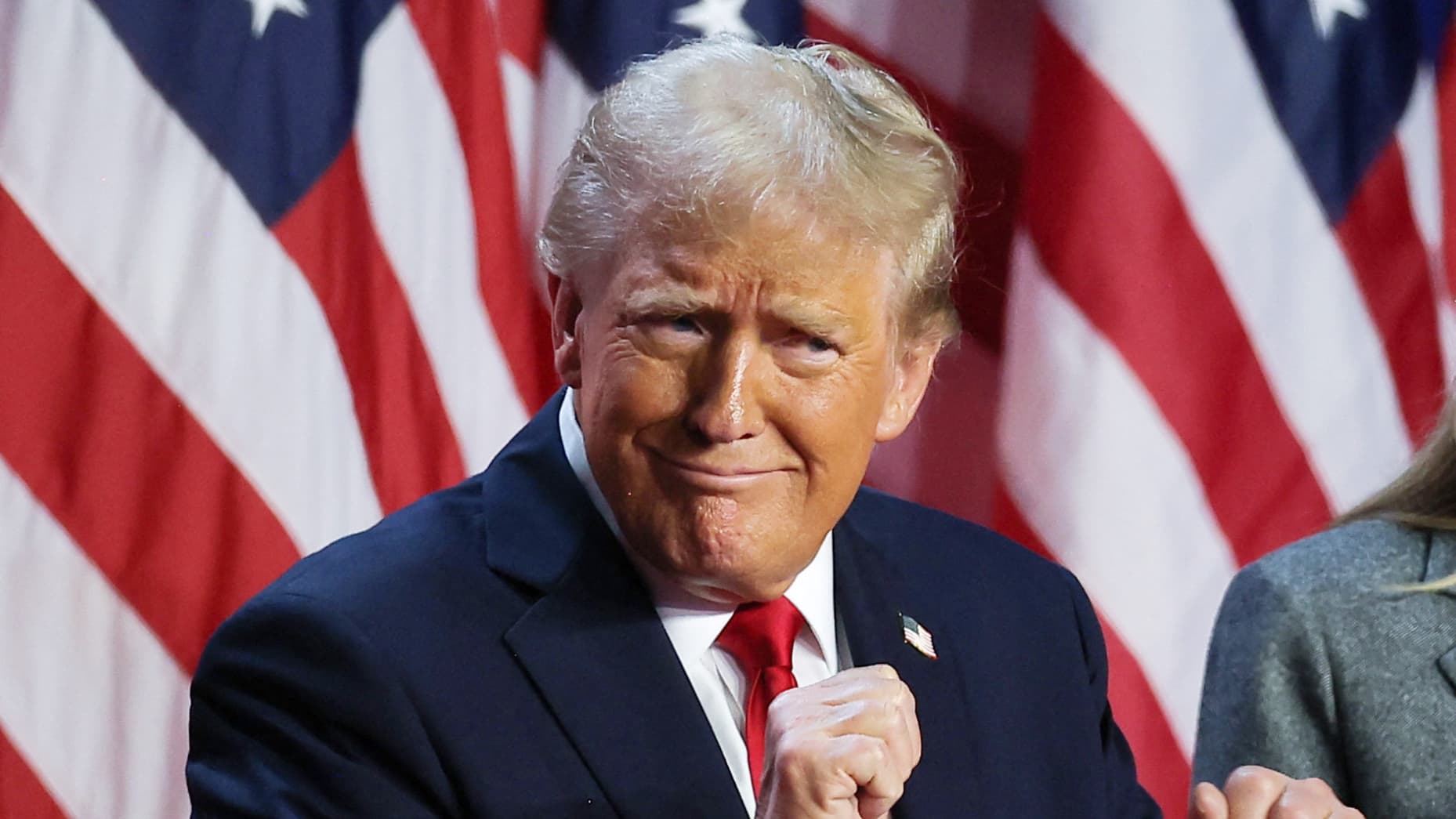Who Will Prevail? Donald Trump vs Kamala Harris in the 2024 Election Battle

The 2024 U.S. Presidential election is shaping up to be a historic showdown. With former President Donald Trump likely to face Vice President Kamala Harris, the race represents a stark choice between two competing visions for America. This clash of political titans, each with passionate supporters and strong policy agendas, will center around issues that impact millions of Americans—from economic reform to social justice and foreign policy. In this article, we’ll explore the backgrounds, policies, and ideologies of Trump and Harris to better understand who might emerge victorious in this high-stakes battle for the White House.
Background of Donald Trump
Donald Trump, a business magnate-turned-politician, is no stranger to the spotlight. After his unexpected 2016 victory, Trump’s presidency was marked by a focus on reducing taxes, deregulating industries, and reasserting American strength on the world stage. His “America First” agenda resonated with those who felt disillusioned by globalism and saw his unfiltered communication style as a refreshing change from traditional politics. Trump’s popularity within the Republican Party remains strong, as he appeals to a voter base that values conservative values, economic independence, and national pride.
Background of Kamala Harris
Kamala Harris’s rise in American politics has been equally historic. As the first female, Black, and Asian-American Vice President, Harris represents a significant shift in U.S. politics. A former prosecutor and Senator from California, Harris has consistently championed progressive causes, from criminal justice reform to healthcare expansion. Her appeal lies in her advocacy for social equity, environmental sustainability, and a balanced approach to governance. For voters seeking change from Trump-era policies, Harris represents a forward-thinking vision that speaks to a broad coalition, especially younger voters and minority groups.
Contrasting Leadership Styles
One of the most noticeable contrasts between Donald Trump vs Kamala Harris lies in their leadership styles. Trump’s approach is bold, direct, and often divisive, resonating with those who appreciate his no-nonsense attitude. His focus on American exceptionalism and economic nationalism has built a fiercely loyal following. In contrast, Harris embodies a more collaborative and diplomatic approach. She speaks to inclusivity and often emphasizes unity, appealing to voters who want a leader committed to bridging divides and addressing social justice issues.
Key Issues in the 2024 Election
Both Trump and Harris will likely address a set of core issues that reflect the needs and values of American voters. The economy, healthcare, immigration, and social justice are among the topics that will shape the election. Each candidate offers a unique perspective on these areas, which could influence how voters perceive their leadership potential.

Economy and Job Creation
Economic recovery and job creation remain top priorities for Americans. Trump’s platform has historically emphasized tax cuts, deregulation, and incentives for businesses, which he argues drive job creation and strengthen the economy. Under Trump’s leadership, the U.S. saw significant tax reforms aimed at promoting business growth. In contrast, Harris advocates for economic equity. She supports policies that would raise the minimum wage, expand social safety nets, and focus on closing wealth gaps. Her approach appeals to those who believe that economic success should be more evenly distributed among all citizens.
Healthcare Policies
Healthcare is a critical concern for millions, with Trump and Harris holding opposing views on how to tackle the issue. Trump’s administration attempted to dismantle the Affordable Care Act (ACA), which he viewed as an overreach of government in personal health decisions. His preference leans toward reducing government involvement in healthcare, focusing on market-driven solutions. Harris, however, supports expanding the ACA and advocates for more comprehensive healthcare access. She argues that healthcare is a fundamental right and supports increased federal investment to reduce costs for working families.
Foreign Policy: America First vs. Global Alliances
Trump’s America First Approach
Foreign policy under Trump prioritized the interests of the United States above all else. This “America First” stance led to the renegotiation of trade deals, pressure on NATO allies to increase defense spending, and tariffs to protect American industries. Trump’s approach appeals to voters who feel the U.S. should be more self-sufficient and wary of international commitments.
Harris’s Diplomatic and Multilateral Approach
Harris, meanwhile, takes a more traditional approach to foreign policy. She emphasizes the importance of alliances and believes that global challenges—such as climate change, terrorism, and economic instability—require cooperation. Harris advocates for strengthening partnerships with key allies and investing in diplomacy as a tool for peace and stability.
Climate Change and Environmental Policies
Climate change is a divisive issue that reveals sharp differences between Trump and Harris. Trump’s administration pulled out of the Paris Agreement and rolled back environmental regulations to promote energy independence and economic growth, focusing on American oil and gas production. Harris, however, views climate change as an existential threat. She supports re-entering international climate agreements, investing in renewable energy, and implementing policies to reduce carbon emissions. Her stance is appealing to environmentally conscious voters and young people concerned about the planet’s future.
Social Justice and Racial Equality
Social justice has become a focal point in American politics, especially after recent movements for racial equality. Trump’s rhetoric often emphasizes “law and order” and the importance of national security. His base appreciates his stance on protecting police and the rule of law. In contrast, Harris has a background in criminal justice reform and speaks passionately about the need to address systemic inequalities. Her experiences as a woman of color in politics resonate with marginalized communities, and she aims to promote policies that address racial injustice.
Public Perception and Media Influence
Public perception and media portrayals of both candidates play a substantial role in shaping voter opinions. Trump’s ability to dominate media narratives has been a core element of his strategy. Whether supportive or critical, coverage of Trump is rarely neutral, which has helped him maintain a strong, loyal base. Harris, though not as polarizing, faces challenges with public perception as well, especially in conservative media. Her supporters, however, see her as a calm and composed leader capable of bridging divisions, while her detractors often criticize her policy stances as too liberal.
Experience and Governance
When it comes to experience, Trump and Harris bring different backgrounds to the table. Trump’s experience is largely in the private sector, with his first foray into public office being his presidency. His supporters value his outsider perspective, believing it brings a fresh approach to government. Harris, on the other hand, has a legal and political background, with experience as a district attorney, California attorney general, and U.S. senator before becoming Vice President. Her supporters argue that this extensive political experience makes her uniquely qualified to lead.
Support Base and Voter Demographics
Both Trump and Harris have strong, but very different, support bases. Trump’s core supporters are generally conservative, often from rural areas and small towns, with strong values around tradition, national pride, and economic independence. Harris appeals to a more diverse coalition, including younger voters, women, and minority communities. This demographic split highlights the cultural divide in American politics, with each candidate representing a distinct section of the electorate.
Controversies and Scandals
Both candidates have faced controversies that shape public perception. Trump’s presidency included numerous legal and political challenges, from impeachment trials to high-profile lawsuits. Harris, while less controversial, has faced scrutiny over her prosecutorial record, particularly her handling of cases in California. While Trump’s controversies often solidify his base’s support, Harris’s controversies present a challenge as she strives to retain moderate support.
Debates and Public Appearances
Debates and public appearances will play a significant role in shaping public opinion. Trump’s confident and unfiltered style appeals to voters who see him as authentic, while Harris’s approach is more calculated and polished. Each has strengths and weaknesses in a debate format: Trump’s spontaneity often captures attention, while Harris’s measured responses appeal to those who prefer substance over rhetoric.
Predictions and Polling Trends
Early polling suggests a tight race, with Trump and Harris each holding significant appeal among their respective bases. While polling data fluctuates, experts anticipate a closely contested election. Analysts are watching swing states and voter turnout, which are likely to determine the outcome in 2024.
Conclusion
As we look ahead to the 2024 election, the battle between Donald Trump vs Kamala Harris reflects two fundamentally different visions for America. Trump’s platform of economic nationalism and law-and-order appeals to a conservative base, while Harris’s progressive values and emphasis on equity resonate with more liberal voters. This election could be one of the most consequential in modern history, as it will define the future direction of the country.



